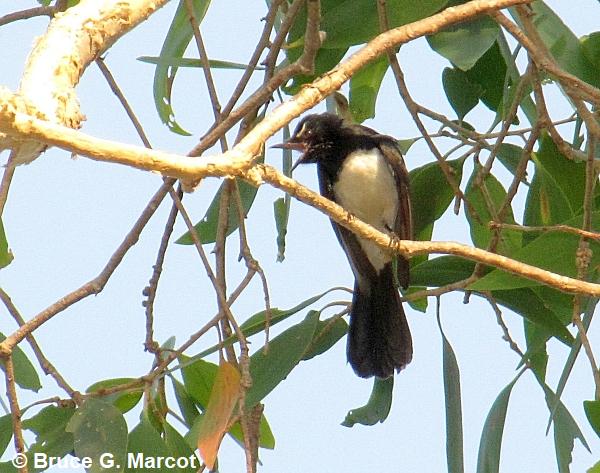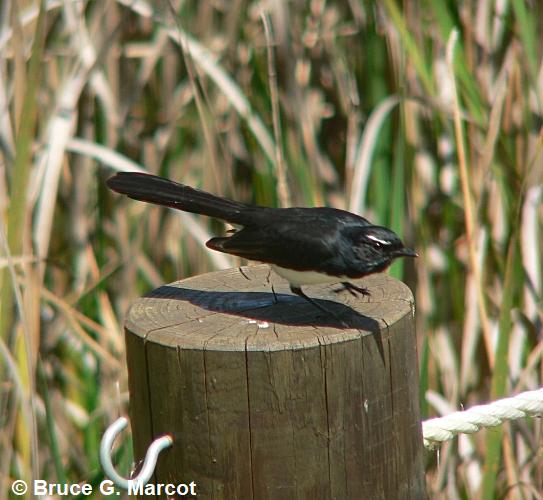|
Explanation:
A prize for dinner! This Willy Wagtail of
northern Australia has snatched out of the air what looks like a Scarlet
Percher dragonfly.

Willy Wagtails have a harsh, scolding call,
and often tangle with other birds for resources and space.
Willy (sometimes spelled Willie) Wagtails are indeed very insectivorous.
They are commonly found throughout in Australia and parts of southeast Asia
and Pacific Islands. They are not, however, true "wagtails,"
and are more related to fantails, although they do have the habit of wagging
their tail side-to-side when on the ground as wagtails do. And
apparently, that tail motion is used to stir up insect prey, so there is
method for their wagging madness. Willy
Wagtails have even played a role in hunter-gatherer mythologies.
Aboriginal legends of Australia have used the behavior of animals to represent
social events. One legend, from Uluru (Ayers Rock) in central Australia,
"describes the Willy Wagtail woman transgressing ritual law by dancing
like a man, in the way the wagtail bird puffs out its chest and swings from
side to side" (Layton 1985, p. 448).

Information:
Layton, R. 1985. The cultural context of
hunter-gatherer rock art. Man, New Series 20(3):434-453.
|
Index |
Location | Search | About EPOW | ... Next >
Google Earth locations